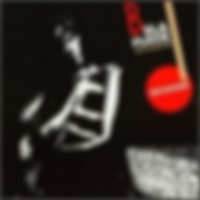Was there ever a better how-de-do than Pat Flynn?s? (May 4, 2015)
- David Royko
- May 3, 2015
- 3 min read
Was there ever a better how-de-do than Pat Flynn’s?
The opening number of banjoist Bela Fleck’s 1984 instrumental album, “Deviation,” is a classic of the hard-to-name genre sometimes called Newgrass, or progressive bluegrass, or New Acoustic Music, or maybe just jazz (fused with bluegrass – Blusion?). It’s the title track.
Backing him (if you can call it that) are the three fellow-members of Fleck’s latest band, the revamped New Grass Revival -- fiddler/mandolinist/guitarist/singer/leader Sam Bush, singer/bassist John Cowan, and guitarist/singer Pat Flynn.
Flynn’s name jumped out of the personnel list, and not because of excited familiarity. Quite the opposite, really. What the heck is a no-name doing here, in this fast – no, fastest – company?
Such as Bush, who made a renowned instrumental LP (“Poor Richard’s Almanac”) in 1969, while still in high school, and quickly ascended to the peak of mandolin/fiddle mountain, before leading the genre-defining New Grass Revival, ultimately for 18 years.
By the time Fleck was 21, he’d released a solo album (Crossing the Tracks) along with two albums with his first professional band, Tasty Licks. And Cowan wasn’t just a bassist but Newgrass music’s Pavarotti.
The additional guests were just as eye-and-ear-catching.
Dobroist Jerry Douglas already had been a member of two legendary bands while still in his teens: Country Gentlemen; JD Crowe and the New South. And future violin superstar Mark O’Connor was in junior high school when his jaw-dropping records started coming out as he was winning every fiddle contest known to man or beast.
Each and every one, a staggering star soloist, the reigning young kings of their respective instruments.
Pat Flynn?
It wouldn’t be an obscure name for long. These days, besides being a first-call studio session guitarist in Nashville and appearing on hundreds of recordings, Flynn has been a producer, songwriter, and member of various bands in his post-New Grass Revival days (the band’s last gig was at the Grateful Dead’s New Years Eve show, 1989). And by the time he wrapped up with NGR, among plenty of other accolades, he’d entered Frets Magazine’s Gallery of the Greats, having won Guitarist of the Year five times.
But when Flynn joined New Grass Revival, though he had worked with bands on the west coast and had done some recording, the ex-Californian’s name rang few, if any bells.
1984 changed that. Besides Fleck’s “Deviation,” that year also saw the release of NGR’s “On The Boulevard,” showcasing, not just his dazzling guitar work, but Flynn’s songwriting and singing – a triple threat.
So, if you found “Deviation” before “On The Boulevard” that year (and with indy record distribution for labels like Rounder and Sugar Hill the way it was back then, finding either could be a challenge), your first exposure to Pat Flynn was the first cut, and his Deviation solo.
Whew.
Every fan of Newgrass music, and any guitarist, period, couldn’t believe they’d never heard of this guy. Goosebumps like that don’t come easy, or often. In forty-eight seconds, Flynn displays lightning fingers tossing notes like a buzz saw spewing sparks, a driving, muscular style incorporating dazzling pull-offs and rhythmic displacement that keep the solo flying while applying unpredictable phrasing, mercurial dynamic shifts, and sharp, clever ideas.
In other words, it was a style distinct, personal, invigorating, and simply, unique.
And then, when you found “On The Boulevard,” it brought the realization that this incredible guitarist wasn’t just an incredible guitarist.
Pat Flynn went from a “Who?” to “Whoa!” in less than a minute.
And it began more than 30 years ago, with Deviation.

